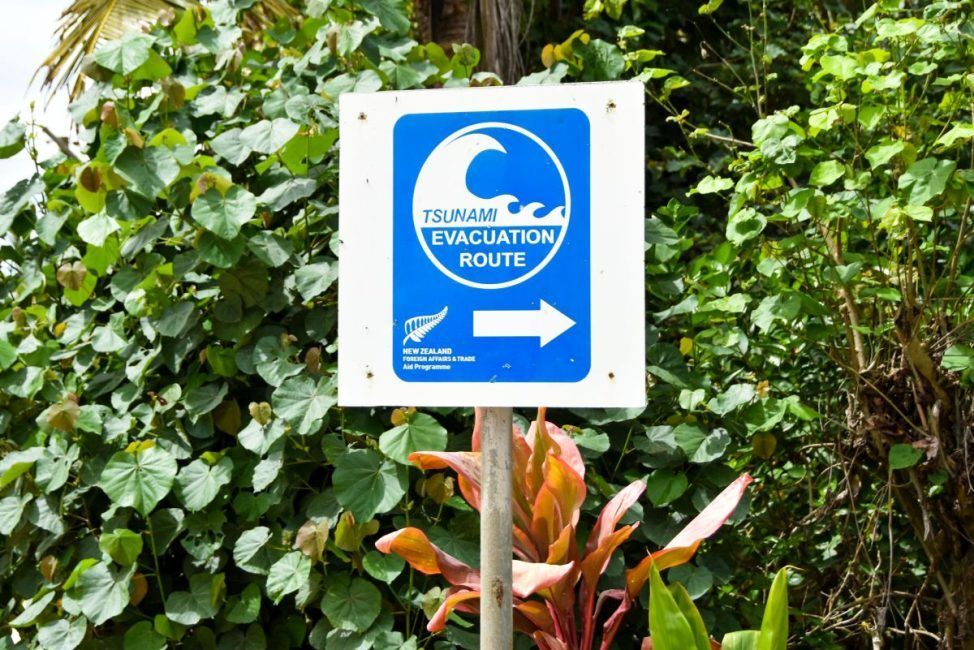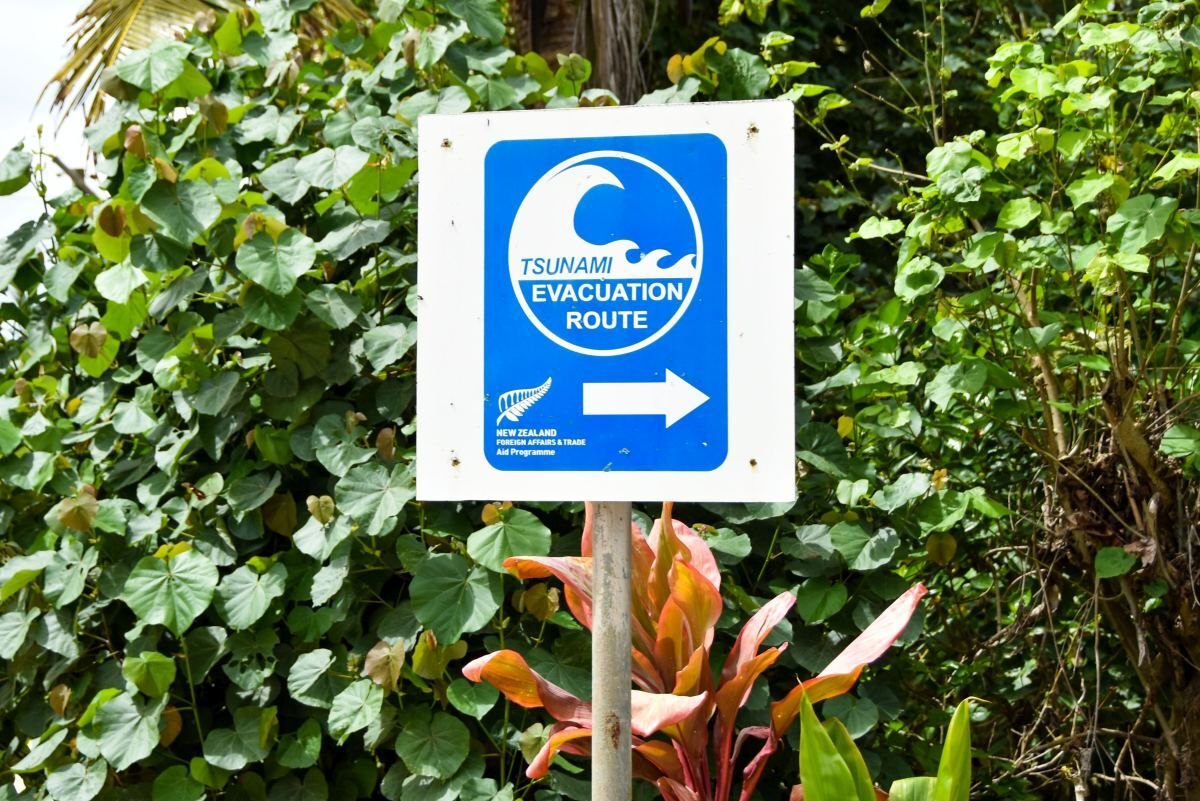A Traveller’s Guide to Volcanic Eruptions, Earthquakes and Tsunamis in Tonga
Tonga sits on one of the most active regions for earthquakes in the world, the South Pacific Rim. This means that the country is vulnerable to environmental hazards, such as earthquakes, volcanic eruptions and tsunamis. Although Tonga has made the world news in recent years due to volcanic eruptions and tsunamis, these events rarely occur so shouldn’t be a deterrent for travellers to explore these beautiful islands. Regardless, there are ways you can prepare yourself for natural disasters which we’ll outline in this guide to volcanic eruptions, earthquakes and tsunamis in Tonga.
Cyclones are another type of potentially damaging weather event that can occur in Tonga, so for more information, see How to Prepare for a Cyclone in Tonga.
6 Facts About Earthquakes, Tsunamis and Volcanic Eruptions in Tonga
- Tonga sits on an active earthquake zone of the Tonga Plate
- Since 1865, only seven tsunamis have been recorded in Tonga making tsunami occurrence rare compared to other countries
- Most earthquakes occur on the ocean floor in Tonga
- There have been 14 deaths from tsunamis in Tonga
- There has been one death from earthquakes in Tonga
- The Hunga Tonga-Hunga Ha’apai volcanic eruption was the largest recorded since the eruption of Krakatoa in 1883.
Earthquakes in Tonga
With Tonga sitting on the zone known as the Pacific Rim of Fire, it is prone to experiencing earthquakes. Most earthquakes occur on the ocean floor, making tsunamis more of an issue than the quake itself (see the section below). However, large earthquakes can still cause buildings to fall, fires and landslides.
Earthquakes That Have Occurred in Tonga
While most earthquakes that occur in Tonga are small tremors with no impact on travellers, larger earthquakes in the recent past have included:
- November 1865 – 8.0 Ms (surface-wave magnitude) earthquake off the coast of Ha’apai which caused minimal damage
- April 1919 – 8.1 Mw (moment magnitude) earthquake between Vava’u and Niue which caused minimal damage
- June 1977 – 7.2 Ms earthquake off the south coast of Tongatapu caused one death and serious damage to infrastructure
- May 2006 – 8.0 Mw earthquake in Ha’apai caused one injury, some damage to infrastructure and landslides
- March 2009 – 7.6 Mw earthquake off the south coast of Tongatapu which caused minimal damage.
What to Do if You Experience an Earthquake in Tonga
There is no way to predict earthquakes, so any actions you take for your own safety have to occur while the earthquake is happening. Measures you can take include:
- If you are in a building, seek shelter under a table, bench or bed. You can also stand under the doorframe which is one of the strongest foundations in a building
- Stay away from windows, mirrors, cupboards and shelves
- Stay out of elevators and stairways
- If you are outside, move away from power lines, trees, buildings and anything else that could fall on you.
For more general safety advice, see Tonga Safety Tips: Is Tonga Safe for Tourists?
Tsunamis in Tonga
Tsunamis are the largest danger of earthquakes in Tonga, but can also be caused by landslides, volcanic eruptions and anything else that rapidly displaces a large volume of water.
Tsunamis That Have Occurred in Tonga
Since 1865, there have been seven tsunamis recorded in Tonga, which is quite rare compared to other countries. The most impactful tsunamis recorded were in September 2009 and January 2022.
Samoa 2009 Tsunami
The 2009 tsunami was caused by an earthquake between Samoa and the Tongan island of Niutatoputapu in The Niuas, which resulted in 11 deaths and destroyed villages.
Hunga Tonga-Hunga Ha’apai Volcanic Eruption
The 2022 tsunami was caused by the eruption of the Hunga Tonga-Hunga Ha’apai submarine volcano. Ashfall and the resulting tsunami caused widespread destruction across the outer islands and west coast of Tongatapu, the east coast of ‘Eua and the southern islands in the Ha’apai island group. Although there were three fatalities, this number was very low considering the scale of the destruction which is a testament to the preparedness of Tonga for such extreme events.
How to Prepare for a Tsunami in Tonga
A little bit of warning is usually given when a tsunami is about to hit land, but tsunamis happen fast and require fast action. There are a few ways you can prepare for a tsunami in Tonga, which include:
- Be aware of tsunami evacuation maps for where you’re staying
- Listen out for tsunami warnings emitted through loudspeakers and sirens in urban areas, through radio, TV, online on news websites and the Tonga Meteorological Service website
- Download some tsunami warning apps or text messaging services, such as SMS-Tsunami-Warning.com and the Tonga Weather Alerts Response App.
What to Do if a Tsunami Warning is Issued
Tsunami warnings can be issued through sirens, loudspeakers and news media in the South Pacific. Other signs of a tsunami could be a strong earthquake, seeing the ocean recede and/or hearing unusual roaring sounds from the ocean. If any of these signs occur, follow the appropriate steps:
- If you see signs of a tsunami before a tsunami warning is issued, act immediately
- If you’re on the coast, move inland and to higher ground
- If you are in a town and can’t move inland, seek shelter in the upper levels of a multi-storey building
- Head to areas as advised on tsunami evacuation maps.
After a tsunami, continue listening to media for announcements. Only move back into the affected areas when authorities have said it is safe to do so.
Frequently Asked Questions About Earthquakes, Tsunamis, Volcanic Eruptions and Natural Disasters in Tonga
What are the most asked questions about earthquakes, tsunamis, volcanic eruptions and natural disasters in Tonga? If you have questions about cyclones, head to Cyclones in Tonga: A Guide to Cyclone Safety in Tonga. Otherwise, here are some questions answered.
When Was the Last Volcanic Eruption in Tonga?
The last volcanic eruption in Tonga was the Hunga Tonga-Hunga Ha’apai eruption which began in December 2021 and lasted around two weeks with a powerful climax on 15 January 2022, which caused widespread ashfall and tsunami waves across Tonga.
How Serious is the Tonga Volcano?
For the context of the seriousness of the Tonga volcano, the Hunga Tonga-Hunga Ha’apai volcano had the largest eruption recorded since Krakatoa in 1883. Ash flew up 61 km (38 mi) into the atmosphere, while around 146 teragrams of water vapour (around 60,000 Olympic-size swimming pools) went into the Earth’s stratosphere. In terms of damage, it is estimated that the eruption caused US$90.4 million worth of damage across Tonga, 19 injuries and four deaths.
Is Tonga in the Ring of Fire?
Yes, Tonga is within the volcanic zone known as the Pacific Ring of Fire.
When was the Last Time Tonga Had a Tsunami?
Tonga last had a tsunami on the 15 January 2022.
How Many People Died in the Tongan Tsunami?
A total of four deaths were recorded in Tonga as a result of the 2022 tsunami caused by the Hunga Tonga-Hunga Ha’apai volcanic eruption. Two additional deaths were recorded in Peru as a result of the tidal waves caused by the eruption.
How Tall Was the Tonga Tsunami?
The Hunga Tonga-Hunga Ha’apai tsunami waves were between 4 and 22 m (13-72 ft) high across Tonga, although the wave at the eruption’s centre is thought to have reached 90 m (295 ft) high.
More About Earthquakes, Volcanic Eruptions and Tsunamis in Tonga
That’s it for the guide to earthquakes, volcanic eruptions and tsunamis in Tonga. More safety advice can be found in How to Keep Safe in Tonga, as well as the following articles:
- Can You Drink the Water in Tonga?
- What are the Best Sunscreens for Tonga?
- Do You Need Vaccines to Travel to Tonga?
Finally, head over to The Complete Travel Guide to Tonga or get even more advice in our 31 Tips for Travelling in Tonga.
Author
Robin (Lopini) C.
This article was reviewed and published by Robin, the co-founder of Tonga Pocket Guide. He has lived, worked and travelled across 16 different countries before settling in the South Pacific, so he knows a thing or two about planning the perfect trip in this corner of the world. Robin works and consults regularly with the Ministry of Tourism of Tonga. Robin is also the co-founder of several other South Pacific travel guides and is a regular host of webinars with the South Pacific Tourism Organisation.

